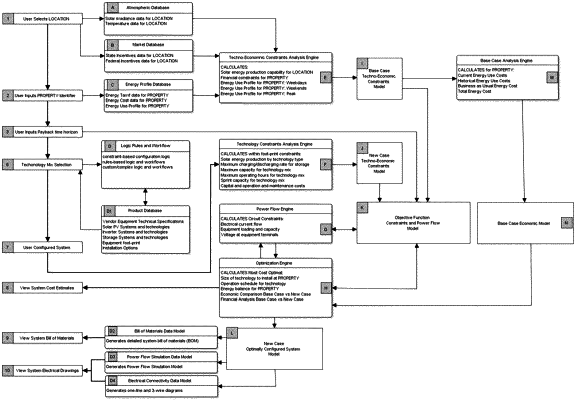| CPC G06Q 30/0611 (2013.01) [G06Q 10/067 (2013.01); G06Q 30/0623 (2013.01); G06Q 30/0641 (2013.01); G06Q 50/06 (2013.01); H02J 2203/20 (2020.01)] | 17 Claims |

|
1. A method comprising:
generating, by a computing device, a base case economic model for a virtual energy system, the base case economic model based at least in part on a location of the virtual energy system;
generating, by the computing device, an objective function model and one or more constraints for the virtual energy system;
calculating, by the computing device, a size of the virtual energy system that achieves an objective function described by the objective function model using the one or more constraints by comparing an economic model of the virtual energy system with the base case economic model, wherein the virtual energy system includes an optimal combination of technology and an operation schedule to supply energy services at the location, while optimizing energy flows to minimize costs and carbon dioxide emissions;
performing, by the computing device, a power flow simulation of the virtual energy system based on the calculated size, a time-varying atmospheric data model, and photovoltaics (PV) technology performance, efficiency and power output ratings, where the power flow simulation performs quasi-static time-series power flow analysis and calculates electrical power output for the calculated size of the virtual energy system;
generating, by the computing device, a virtual energy system configuration based at least in part on results of the power flow simulation including the electrical power output for the calculated size of the virtual energy system; and
generating, by the computing device and based on the virtual energy system, data for building a real-world version of the virtual energy system.
|